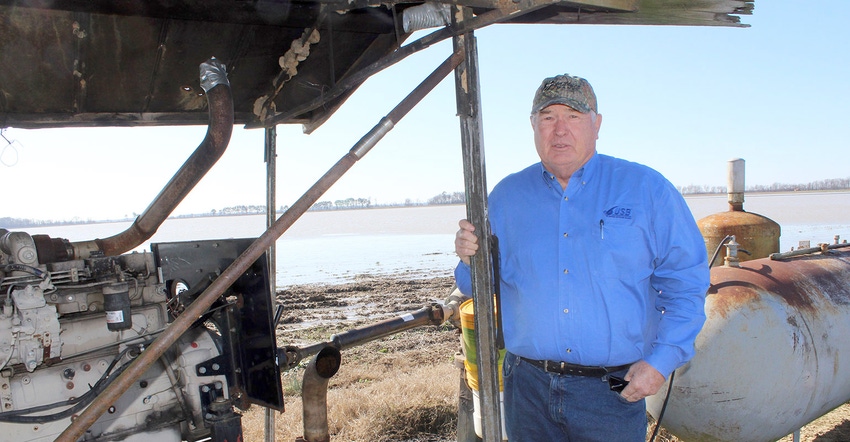
When the trade war slammed the export market door to China, U.S. soybean's largest customer, an effort through the U.S. Soybean Board looked for export and domestic opportunities.
The U.S. Soybean Export Council (USSEC) increased exports to North African countries like Morocco, which doubled imports the last two years. The USSEC also identified Egypt several years ago as a country with export market growth potential.
"I think we're in a new market paradigm shift," says Jim Carroll, an Arkansas soybean farmer recently elected 2020 chairman of the United Soybean Board (USB) at its annual meeting. "Our leadership could see the impact from the loss from the Chinese market, so through USSEC, our international marketing partner, we worked to expand other markets even before the trade disruption, and those efforts have been successful."
U.S. soybean imports into Morocco went from 122,674 metric tons in 2016-17 to 532,270 metric tons in 2017-18.
U.S. soybean exports to Egypt increased by 1.3 million metric tons in 2017-18 over 2016-17. "Many factors were right for that explosive growth in Egypt," Carroll says. "As an export partnering country, they showed strong economic and population growth and an increasing demand for protein."
USDA is estimating 84 million acres of soybeans will be planted this year. If that holds true, it could be the fourth largest crop on record. "Market expansion is critical," Carroll says.
Partnerships
USB hopes partnerships with the U.S. Department of Defense (DOD) and the Foundation of Food and Agriculture (FFAR) will extend the reach of USB research investments. "One of four shared funding projects with FFAR, through a team of interdisciplinary researchers at the University of Nebraska-Lincoln, looks to improve the genetic diversity, seed composition and yield of soybeans through biotechnology and genomics," Carroll says.
"Improved protein content and quality hold potential for increased soybean demand, and this research could improve the protein level in soybeans as a source of nutrition for people and animals while helping economies grow."
USB approached the DOD a few years ago to implement soy bio-based penetrating lubricants and spill absorbents and other products as part of a "Go Green" initiative. Another USB-funded research project is evaluating a soybean oil-based motor oil.
"It makes sense to have products like these that would be friendlier to our environment, increase our level of sustainability, and expand markets for our commodity," Carroll says. "As more consumers base buying decisions on product sustainability, our board created action teams under the target area of sustainability dedicated exclusively to that topic to make sure it is incorporated in everything we do as an organization. We also want to lead end-users of our product in that direction as well, and these research projects play directly into that commitment."
Goodyear
USB targeted seed money for a project with the Goodyear Tire and Rubber Company to test potential of soybean oil in the production of all-weather tires, and recently helped bring it to market. "Cold temperatures make tires more rigid and less able to hug the road," Carroll says. We're hoping soybean oil improves tire flexibility and traction in cold temperatures."
Carroll says 12 ounces of soy-based oil is used in each passenger car tire. "Can you imagine the potential demand if this research comes to fruition? With millions of tires sold each year, it's hard for me to fathom," Carroll says. "We're also funding a project examining the use of soy oil to increase the strength and durability of asphalt to prevent tire grooves from developing on roads during high temperature days."
That project, being conducted at Iowa State University, must go through five years of testing, but it is estimated that the oil from 400 bushels of soybeans would be needed per lane mile of asphalt. "Increasing demand in those aforementioned markets and considering the demand potential research is estimating, if the Chinese market reopens and their demand for soybeans returns, the future would look pretty good for soybean farmers," Carroll said.
About the Author(s)
You May Also Like




